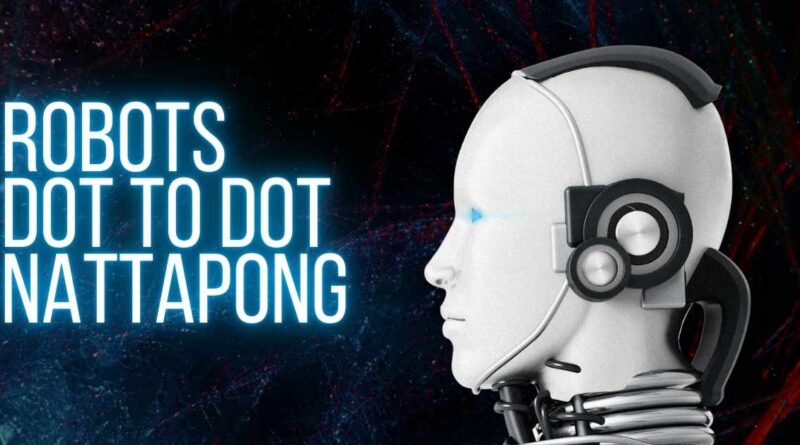Exploring Robots Dot to Dot Nattapong: A Game-Changer in Educational Robotics
1. Introduction to Robots Dot to Dot Nattapong
The rise of robots dot to dot Nattapong signals a revolutionary approach in EdTech—one that turns abstract STEM ideas into engaging, hands-on learning experiences. This unique concept blends visual dot-connecting activities with beginner-friendly robots to create a learning path that’s fun, intuitive, and deeply educational.
At its core, this model allows children to interact with robotics without needing prior coding knowledge. Instead of writing scripts or entering commands, they draw or lay out dot-to-dot paths that the robot follows. This method, pioneered or inspired by Nattapong, has become a favorite among educators, especially for early learners in STEM.
2. Who is Nattapong, and Why Is He Relevant?
While detailed biographical information about Nattapong remains limited online, he is widely regarded in niche educational and robotics forums as a key influencer in gamified tech education. Whether Nattapong is an individual educator, a YouTube creator, or the brand behind a robotics toolkit, the association with interactive robotics in a dot-to-dot format is unmistakable.
His innovative methodology focuses on simplifying robotics, making it more accessible to kids as young as five. His work, real or representative of a broader movement, is helping bridge the gap between complex programming languages and early-stage learners.
3. What Are Dot-to-Dot Robots?
Think of the traditional dot-to-dot game—kids connect numbered dots to form a shape. Now, add a robot into the mix. In this modern adaptation, the dot-to-dot system guides the robot’s path, turning every movement into a learning opportunity.
There are two primary methods:
- Physical Dot Maps: Dots are printed or drawn on paper/mats. Robots equipped with sensors follow these lines.
- Digital Platforms: Apps simulate dot paths, and robots execute them via Bluetooth or infrared signals.
This interaction provides an ideal blend of visual learning, tactile engagement, and logic development, which is why the robot’s dot Nattapong model has gained such rapid popularity.
4. How the Robots Dot to Dot Nattapong Method Works
Here’s how the system typically functions:
- Create the Dot Path: Children or teachers create a sequence of dots on a mat, screen, or printed sheet.
- Program the Robot via Dots: The robot either detects the path using sensors or is manually directed via app commands aligned to the dot positions.
- Run the Sequence: As the robot follows the path, learners observe cause-effect behavior and adapt accordingly.
- Iterate and Improve: Based on the outcome, children adjust the path or robot behavior to achieve different results.
The learning loop is continuous, promoting trial and error, creative thinking, and interactive problem-solving.
5. Why It’s Effective: Key Learning Benefits
The success of the robot’s dot-to-dot Nattapong model lies in its alignment with how young brains learn best—through play, visual stimuli, and hands-on activity. Here are some of its notable advantages:
- Visual Processing: Great for children with different learning styles, especially visual and kinesthetic learners.
- Sequencing Skills: Dots enforce a natural sense of order, ideal for early math and logic skills.
- Motor Skill Development: Drawing, placing dots, and handling robots refine fine motor abilities.
- Immediate Feedback: Watching a robot follow their exact input enhances motivation and confidence.
- Screen-Limited Learning: Many kits are analog or hybrid, reducing excessive screen time for children.
This method doesn’t just teach robotics—it introduces the fundamentals of engineering, logic, and digital interaction in a way that feels like play.
6. Popular Tools and Platforms Inspired by the Concept
While the exact kit or product called “robots dot to dot Nattapong” may be regionally specific or still under development, several market leaders reflect similar principles:
- Ozobot: A tiny robot that follows drawn lines and color-coded patterns.
- Bee-Bot: Perfect for kindergarten students; moves based on directional input.
- Edison Robot: Recognizes barcodes and performs functions like line tracking and obstacle detection.
- Cubetto: WA ooden robot controlled with physical blocks, embodying tangible programming.
These tools offer strong parallels to Nattapong’s vision and can be easily integrated into classrooms or home-learning environments.
7. Classroom Integration and Use Cases
Educators have quickly realized the potential of this system in classrooms. Some creative uses include:
- Story-Based Challenges: Students create dot maps to guide robots through a story.
- Math Games: Use dot paths to teach counting, addition, or geometry.
- Coding Without Code: Introduce programming logic without writing code.
In Thailand, Singapore, and several European nations, Nattapong-inspired dot-to-dot robot kits are being used in STEM clubs, special education, and primary-level science classes.
8. The Role of Parents and Educators
While the tools are powerful, the role of adults remains critical:
- Teachers guide students in using dot sequences to explore concepts like loops or conditionals.
- Parents can use these kits at home to bond with their children while subtly reinforcing learning.
Many educators report improved classroom behavior, stronger peer collaboration, and increased curiosity in children after introducing robots dot-to-dot Nattapong-style activities.
9. Challenges and Considerations
Despite its benefits, this approach isn’t without challenges:
- Initial Investment: Some robotics kits may require a significant upfront cost.
- Training: Educators need proper training to maximize kit usage.
- Curriculum Fit: Integrating dot-to-dot robotics into existing curricula may require customization.
However, these hurdles are outweighed by long-term gains in engagement and educational ROI.
10. Expert Opinions and Industry Feedback
Educational technologists and child psychologists often endorse hands-on, gamified learning methods. According to Dr. Lina W. from EdTechReview, “Nattapong’s dot-to-dot robots tap into spatial, logical, and kinesthetic learning—all in one system.”
Workshops around Southeast Asia use dot-to-dot robots as introductory modules in maker spaces and robotics labs, often seeing a 30–40% increase in participation compared to traditional coding clubs.
11. Future Trends in Dot-to-Dot Robotics
The field is evolving rapidly. What’s next?
- AI-Enhanced Robotics: Bots that adapt dot paths based on user behavior.
- AR Dot Mapping: Augmented reality overlays for interactive robot paths.
- Gamified Curriculums: RPG-style learning where dot maps represent levels.
- Open Source Kits: Nattapong-inspired communities may launch low-cost DIY alternatives.
As educational robotics scales globally, dot-to-dot-based systems will likely play a central role in early childhood and primary STEM education.
12. Final Thoughts and Takeaway
The robots dot to dot Nattapong model represents a breakthrough in making robotics education accessible, fun, and inclusive. Whether you’re an educator looking to enhance your classroom, a parent supporting home learning, or an EdTech entrepreneur exploring the next big trend, this methodology is worth your attention.
By using dot-to-dot logic to teach robotics, Nattapong (and those inspired by him) are helping children build foundational skills that will prepare them for a digital future. It’s not just a game—it’s the beginning of how a new generation learns to interact with technology.




